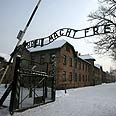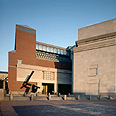

Occupying the site of the biggest Nazi death camp in Poland, the Auschwitz-Birkenau museum is having trouble getting back a wooden barracks building it rented to the US Holocaust Memorial Museum some 20 years ago, officials said Tuesday.
As many as 1.5 million people, mostly Jews, perished in the Auschwitz-Birkenau camp, either in the gas chambers or from freezing temperatures, starvation, sickness, medical tests and forced labor.
"It's about one-third, or maybe a half of a barrack, its wall panels, that we rented to Washington," Piotr Cywinski, the museum's director, told Reuters.
The barracks were originally prefabricated stables, but the Nazis turned them into rough shelters for camp inmates, packing more than 400 people into each one, on wooden shelves.
"The lease was extended, but finally ended in 2009. In the meantime, the law has changed in Poland and now it simply must come back. There is no other way," said Cywinski.
New law
A new Polish law on historical monuments, passed in 2003, says no artifact can be rented out for more than five years.
"But the Washington Holocaust Museum installed the barracks as an important part of its permanent exhibition years ago, so it's a complex matter, requiring more time to solve," he said.
Both the US Embassy in Warsaw and Polish government officials said they were actively engaged in delicate negotiations.
"Both the Museum and our Polish partners have been actively working on this issue, and we have discussed it with the Polish government officials through appropriate diplomatic channels," the Embassy said.
"The two institutions have an excellent and longstanding record of working effectively together, and we encourage both sides to continue to seek a mutually acceptable solution," it added.
The Auschwitz-Birkenau open-air museum covers more than 200 hectares (500 acres) and 155 buildings, including the gas chambers, 300 ruined facilities and hundreds of thousands of personal items.
Poland was home to Europe's largest Jewish community of some 3.2 million before World War Two, but most of them died under the Nazi occupation.















